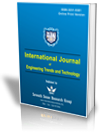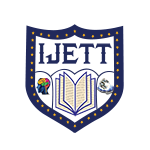AI for Healthcare: Improving Classification Models for Screening Osteoarthritis Patients with Voting and Embedded Learning Techniques
AI for Healthcare: Improving Classification Models for Screening Osteoarthritis Patients with Voting and Embedded Learning Techniques |
||
 |
 |
|
| © 2025 by IJETT Journal | ||
| Volume-73 Issue-4 |
||
| Year of Publication : 2025 | ||
| Author : Ploykwan Jedeejit, Wongpanya S. Nuankaew, Patchara Nasa-ngium, Pratya Nuankaew |
||
| DOI : 10.14445/22315381/IJETT-V73I4P131 | ||
How to Cite?
Ploykwan Jedeejit, Wongpanya S. Nuankaew, Patchara Nasa-ngium, Pratya Nuankaew, "AI for Healthcare: Improving Classification Models for Screening Osteoarthritis Patients with Voting and Embedded Learning Techniques," International Journal of Engineering Trends and Technology, vol. 73, no. 4, pp.386-395, 2025. Crossref, https://doi.org/10.14445/22315381/IJETT-V73I4P131
Abstract
The prevalence of morbidity and disease among the elderly population in Thailand constitutes a significant concern that necessitates focused attention, with implications for the national budget. Hence, the objective of this research is to enhance the classification model assessing the risk of osteoarthritis among the elderly demographic in Thailand, to evaluate the model's performance utilizing artificial intelligence technology, and to summarize and identify the risk factors associated with osteoarthritis within this population. The research is structured to compare two data sources: the northern and central regions of Thailand, comprising 354 samples from eight villages in Sop Prap Subdistrict, Sop Prap District, Lampang Province, and 368 samples from eleven villages in Chaichumphon Subdistrict, Laplae District, Uttaradit Province. To bolster the prediction accuracy of osteoarthritis risk among the elderly, the researchers have developed an advanced methodology comprising two components: a combined learning model that integrates XGBoost, LightGBM, Stacking, Bagging, and Voting techniques and an embedded learning model that includes Random Forest, Support Vector Machine, Logistic Regression, and Decision Tree methodologies. The findings indicate that the model constructed utilizing XGBoost and LightGBM techniques achieves an accuracy of up to 99.15%. Consequently, this model may be adapted for integration into a mobile application and developed as a strategy for the care of the elderly population in Thailand.
Keywords
AI for healthcare, Applied informatics for medical, Medical informatics, Medical innovations, Screening osteoarthritis.
References
[1] Vilai Kuptniratsaikul et al., “The Epidemiology of Osteoarthritis of the Knee in Elderly Patients Living an Urban Area of Bangkok,” Journal of the Medical Association of Thailand, vol. 85, no. 2, pp. 154-161, 2002.
[Google Scholar]
[2] Parnnaphat Luksameesate et al., “Using a Discrete Choice Experiment to Elicit Patients’ Preferences and Willingness-to-Pay for Knee Osteoarthritis Treatments in Thailand,” Scientific Reports, vol. 13, no. 1, pp. 1-9, 2023.
[CrossRef] [Google Scholar] [Publisher Link]
[3] Boonsin Tangtrakulwanich, Alan F. Geater, and Virasakdi Chongsuvivatwong, “Prevalence, Patterns, and Risk Factors of Knee Osteoarthritis in Thai monks,” Journal of Orthopaedic Science, vol. 11, no. 5, pp. 439-445, 2006.
[CrossRef] [Google Scholar] [Publisher Link]
[4] Porntip Pa-in et al., “Causal Model of Health Literacy in Thai Older Adults with Knee Osteoarthritis,” Pacific Rim International Journal of Nursing Research, vol. 27, no. 2, pp. 303-316, 2023.
[CrossRef] [Google Scholar] [Publisher Link]
[5] E. Lawrence Hart et al., “The Relationship between Exercise and Osteoarthritis in the Elderly,” Clinical Journal of Sport Medicine, vol. 18, no. 6, pp. 508-521, 2008.
[CrossRef] [Google Scholar] [Publisher Link]
[6] Xueshan Sun et al., “Osteoarthritis in the Middle-Aged and Elderly in China: Prevalence and Influencing Factors,” International Journal of Environmental Research and Public Health, vol. 16, no. 23, pp. 1-18, 2019.
[CrossRef] [Google Scholar] [Publisher Link]
[7] Inoshi Atukorala, and David J. Hunter, “A Review of Quality-of-Life in Elderly Osteoarthritis,” Expert Review of Pharmacoeconomics & Outcomes Research, vol. 23, no. 4, pp. 365-381, 2023.
[CrossRef] [Google Scholar] [Publisher Link]
[8] DonHee Lee, and Seong No Yoon, “Application of Artificial Intelligence-Based Technologies in the Healthcare Industry: Opportunities and Challenges,” International Journal of Environmental Research and Public Health, vol. 18, no. 1, pp. 1-18, 2021.
[CrossRef] [Google Scholar] [Publisher Link]
[9] Mohammed Yousef Shaheen, “Applications of Artificial Intelligence in Healthcare: A Review,” ScienceOpen Preprints, pp. 1-8, 2021.
[CrossRef] [Google Scholar] [Publisher Link]
[10] Fei Wang, and Anita Preininger, “AI in Health: State of the Art, Challenges, and Future Directions,” Yearbook of Medical Informatics, vol. 28, no. 1, pp. 16-26, 2019.
[CrossRef] [Google Scholar] [Publisher Link]
[11] Kanyana Meesarapee, Nattaya Suwankrauhasn, and Rojanee Chintanawat, “Health Literacy and Self-management among Older Persons with Knee Osteoarthritis Stage 3,” Nursing Research and Innovation Journal, vol. 28, no. 3, pp. 353-369, 2022.
[Google Scholar] [Publisher Link]
[12] Suparb Aree-Ue et al., “A Comprehensive Health Education Plus Monitoring Support Program for Older Adults with Knee Osteoarthritis Coexisting with Overweight and Type 2 Diabetes,” International Journal of Nursing Sciences, vol. 9, no. 4, pp. 512-520, 2022.
[CrossRef] [Google Scholar] [Publisher Link]
[13] Porntip Pa-in, and Dao Weiangkham, “Effectiveness of the Health Literacy Promoting Program Among Older Adults with Knee Osteoarthritis in the Rural Phayao Province,” Thai Journal of Nursing, vol. 73, no. 4, pp. 41-50, 2024.
[Google Scholar] [Publisher Link]
[14] Keerati Charoencholvanich, and Boonchana Pongcharoen, “Oxford Knee Score and SF-36: Translation & Reliability for Use with Total Knee Arthroscopy Patients in Thailand,” Journal of the Medical Association of Thailand, vol. 88, no. 9, pp. 1194-1202, 2005.
[Google Scholar]
[15] Sarah L. Whitehouse et al., “The Oxford Knee Score; Problems and Pitfalls,” The Knee, vol. 12, no. 4, pp. 287-291, 2005.
[CrossRef] [Google Scholar] [Publisher Link]
[16] We Li et al., “Gene Expression Value Prediction Based on XGBoost Algorithm,” Frontiers in Genetics, vol. 10, pp. 1-7, 2019.
[CrossRef] [Google Scholar] [Publisher Link]
[17] Yun Ju et al., “A Model Combining Convolutional Neural Network and LightGBM Algorithm for Ultra-Short-Term Wind Power Forecasting,” IEEE Access, vol. 7, pp. 28309-28318, 2019.
[CrossRef] [Google Scholar] [Publisher Link]
[18] Pratya Nuankaew et al., “Hybrid Clustering Learning Models Based on Self-regulated Learning Model Using Unsupervised Learning by Majority Voting Techniques,” Smart Learning for a Sustainable Society Proceedings of the 7th International Conference on Smart Learning Environments, Bangkok, Thailand, pp. 88-97, 2023.
[CrossRef] [Google Scholar] [Publisher Link]

